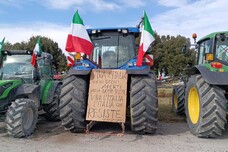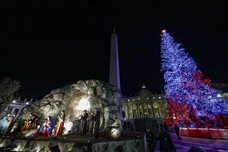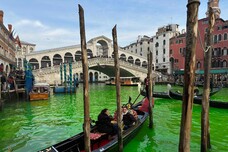The conclave system to elect popes is
a complex machine perfected over centuries of history and
liturgical tradition. It is an earthly vote that, the faithful
believe, through the intercession of the Holy Spirit,
designates the representative of Christ on earth. The process is
governed by strict rules and preceded by a significant liturgy.
The conclave for the election of Pope Francis's successor will
open on May 7.
Some 135 cardinals are entitled to vote, although there are
unconfirmed reports that the bishop of Valencia has pulled out
due to ill health taking the total down to 134.
All the cardinals are forbidden to use any device or make
contact with the outside world by virtue of an oath of
confidentiality and secrecy.
The conclave kicks off with the Latin phrase "extra omnes"
(everyone out), the Sistine doors are locked (conclave comes
from the Latin meaning 'with key'), and the voting operations -
and widely rumoured and fictionally portrayed scheming by
conservatives and liberals - begin.
On May 7, the day the conclave begins, there will be only one
vote in the afternoon while in the following days there will be
four in total, two in the morning and two in the afternoon.
Once the name has been written on the ballot paper under the
phrase 'Eligo in Summum Pontificem' (I elect to the supreme
pontificate), each individual cardinal elector heads towards the
altar with his ballot paper folded and clearly visible.
He places it on a silver plate resting on an urn and then lets
it slide inside.
Once the voting session is over, the first two scrutineers open
and silently read the name written on the ballot, while the
third pronounces the name.
The ballots are punched and tied together, to then be burned
inside a stove.
If there is no election, a mixture will be added that will color
the smoke black.
If not, however, the dean turns to the elected candidate to ask
him whether or not he accepts the role and what name will be
chosen, but only if the name has obtained two-thirds of the
votes.
The final ballots are then burned, adding the white dye that
will announce the election of the new Pope from the chimney of
the Sistine Chapel.
Only at the end will the new pope's dressing or investment take
place in the so-called 'room of tears' in the sacristy of the
Sistine Chapel.
It will then be up to the cardinal protodeacon to announce the
election from the central loggia of St. Peter's Basilica, from
which the new pope will later appear for the Urbi et Orbi
blessing.
The high official announces the name saying I announce to you
with great joy, in the Latin formula Nuntio vobis gaudium
magnum: Papam habemus!, usually contracted in popular belief to
Habemus papam (We have a new pope).
ALL RIGHTS RESERVED © Copyright ANSA











